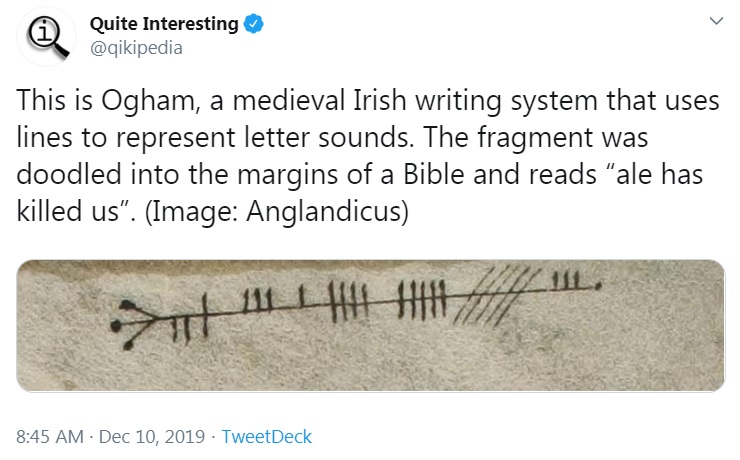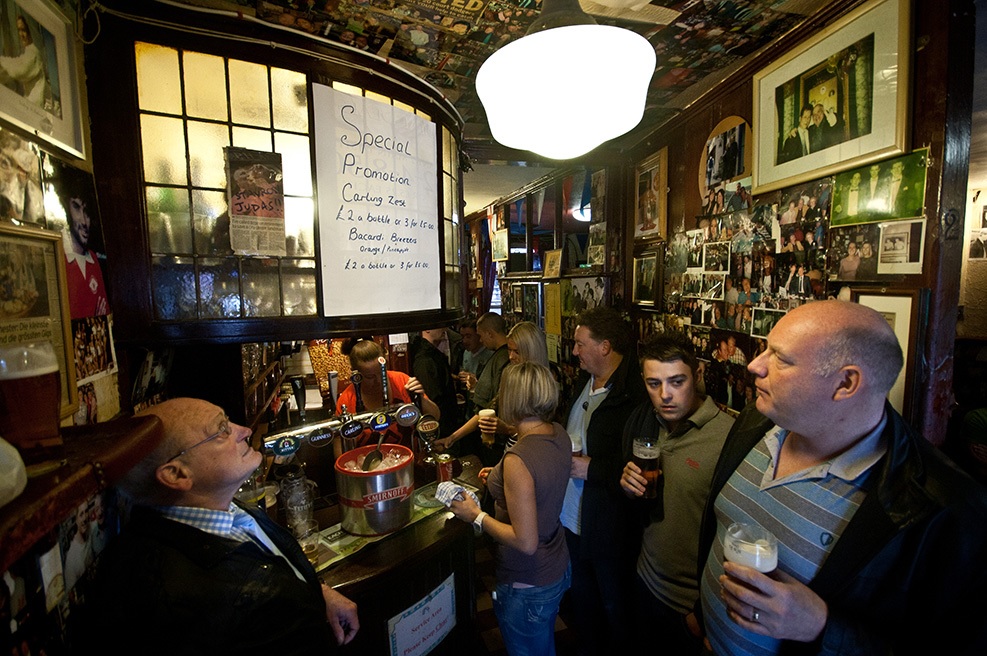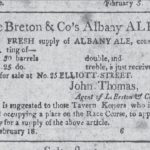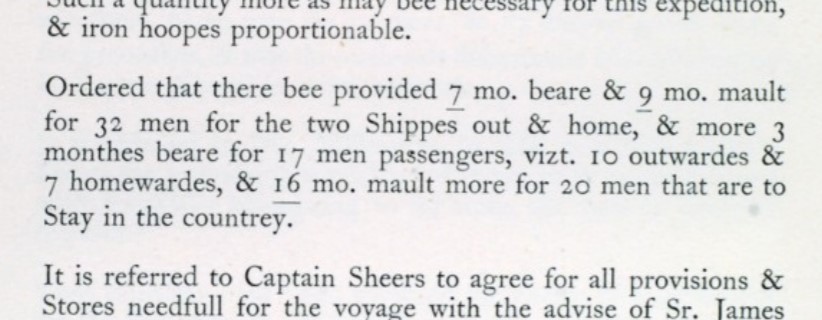When I was a lad, there were common end-of-the-world tales and prophecies that circulated in the grocery store checkout newspaper headlines and junior high hallways. Nostradamus and his fanboys. I think all the dates that were ever suggested are now in the past. Twenty-twenty was never actually much on my mind. But it has a certain ring. We even had reverse twenty twenty / forward twenty twenty this week. Which is very cheery. Pink dress shirt with key lime necktie cheery. Be of good cheer. March is just four weeks away. The dark days are coming to an end.* As Katie** wrote in her latest newsletter, The Gulp:
The soil is warming up. The snowdrops have started meeting in their cabals, in open defiance of the iron grey sky. I’ve seen them. We’re nearly there.
You know what is very 2020? Sobriety. There is talk of it, for example by brewery staffer Jemma:
Not that I was a raging alcoholic, but the daily drink (or two or three) is considered normal and expected, and it was time for me to just kinda put myself in check. I had to prove to myself that I could go without alcohol and I’m proud I was able to.
There are sober bars out there, sober event spaces, calls for sober diversity and there was even a bit of a messy wander in PR publication October, too. But it would be messy, wouldn’t it. I’d worry about any self-clearing self-diagnosis… you could be a raging alcoholic… I’ve sat with many a yellow eyed beer worker telling me about the distance between themselves and alcoholism. Consider Greta, too. Sobriety may be the new glitter. Or it may be made up of admissions others would do well to heed.
Noteworthy #1 : Chibuku from Botswana.
Noteworthy #2: the shadowy Portman Group*** neatly summerized.
Noteworthy #3: Jeff considers his tenth ‘lance-a-versary.
 TBN congratulated Englishman abroad Ron on his subtle celebration of Brexit this week, as illustrated. Ron fell back on his regular “I’m thinking now I should pretend it was deliberate” but I don’t buy it. More to the point, what does it mean. Barm is yeast. Was it a yeasty stout? Why can’t people think of my needs when discussing things in my absence?
TBN congratulated Englishman abroad Ron on his subtle celebration of Brexit this week, as illustrated. Ron fell back on his regular “I’m thinking now I should pretend it was deliberate” but I don’t buy it. More to the point, what does it mean. Barm is yeast. Was it a yeasty stout? Why can’t people think of my needs when discussing things in my absence?
JJB posted another of his wonderful vignettes of his beloved Italy, of a bar he visited in Sicily while also exercising his right to be an Englishman abroad:
Despite the silly English language beer names and descriptions, I was mightily impressed with Ballarak during what was by necessity a fleeting visit. I subsequently learned that the brewery has another, more food-led venue in the Kalsa, a much less sketchy district of central Palermo (the Ballarò is wonderful, but not for the faint-hearted). I’ll be sure to visit both sites when I’m next about.
Elsewhere… hmm… let’s see… you know, I wonder sometimes about the regularly recycled beer topic like explaining freshness, food and beer and Stan’s favorite, the wonderful world of off-flavours. Too bad Ladybird Books don’t put out a series of “Craft Beer for Youth” so that they could all be under one cover and on a bookshelf I don’t have to encounter. Next to the newspaper rack coated with fabulous headlines like “Three guys who like beer start a brewery.”****
Somewhat related, in my spam email folder, I found a letter of complaint sent by Arran Brewery of Scotland about a bottle deposit scheme proposed by the government in Edinburgh:
Gerald Michaluk the Managing Director of the brewery, like the vast majority of his fellow brewers, are set against the Scottish Governments proposals. “It is clear this is a terrible scheme, ill thought through and will disadvantage the small brewers and the smaller shop keepers. At a time when, along with other policies, is seeing the brewing industry is being tightly squeezed from all directions this could be the final straw that breaks the camels back.
The BBC covered the story back in May 2019. I mention this because Ontario has had standardized beer bottles for yoinks and a cooperative returns system since 1927 and it seems to work wonderfully with significant public acceptance.
Another sort of mental rut was noted in relation to Tony Naylor’s article in the Guardian headlined “£96 a bottle: the exotic beer that is as expensive as vintage wine” which rather sensibly points out the factors which caused such a fright. When challenged, the author tweeted this:
Who’s this “we”? I’ve always been 100% against ‘refined connoisseurship’ & the whole cultural cringe of a wine-beer equivalence, particularly where used as cover to drive-up £££ (as it has been) of average beers. Lot of “super-premium” things in beer now really ain’t that super.
Well said.
Old Mudgie has noticed another bit of a new slag being offered by the craft keener contingent: “pint culture“! Seems a bit unnecessary to me. As the OM says, “smaller measures are available in every single establishment that sells draught beer” so why bother making a thing of norms. I am, as you know, all in for quart culture. Don’t even get me started on communal pottle culture.
Speaking of false constructs, Matt asked if the “rebel” culture of craft was going away. Despite efforts by the BA to rewrite the Book of its Genesis glowingly, I am of the class who is aware “rebel” was a bit of a manufactured stance created in the early 2000’s in large part to counteract the salacious drunken tone of micro which was best… or worst… exemplified by the “Sex For Sam” campaign dreamed up by Jim Koch and still illustrated by the sexist labels that pop up from time to time. Matt wrote:
It’s an attitude that has spawned a thousand imitations. Most notably from BrewDog here in the UK, which, with beers like Punk IPA (now the largest selling craft beer in the country), fought its own version of a guerilla war in the beer aisles. The brewery, which now produces beer on three different continents, even held “craft beer amnesties” at its chain of bars, where you could trade “macro” beer for a pint of its own.
I think of it more this way: making vast sums off of brewing is no more novel or rebellious than Mr. Trump’s 2020 State of the Union address proved that things were more unified. Like the fib of small as noted by Evan, rebel is one of the great foundational fibs of craft. Brewing is always about money. The rest in large part fluff, PR and untruth still quietly bowing to mammon. Pick your heroes wisely.
Speaking of himself, very good news that Evan has been appointed an editor at that thing that must reference itself as GBH 27 times in most of the blog posts they run. Hopefully, a more serious and less self-congratulatory approach may result.
In even more good news, there is a brewing collective in Minnesota, the Brewing Change Collaborative that aims to foster diversity a bit more actively:
Despite national statistics that not only show little diversity in the brewing arena but also a disproportionately white workforce, Louder, along with industry colleagues Elle Rhodes and Nasreen Sajady, began to devise a plan that would empower people of color to become more involved in the brewing industry. Using a platform of advocacy, education, and most of all, a safe space to talk about issues in the industry that impact people of color, the Brewing Change Collaborative was conceived. “I am already tokenized and one of the few people of color that owns a brewery,” says Louder. “I would go to work every day and still be that lone person. I didn’t want to be the ‘only other’ in my ‘only other’ situation.”
Conversely, some very sad news that one of the heroes of micro is packing it in, facing not only, first, the beast released by craft but also, now, the taproom and even time itself:
The first female brewer since Prohibition has announced her retirement. Carol Stoudt, who kickstarted this region’s craft beer boom with Stoudts Brewing Company in the late ’80s, has announced via press release that she will retire and take the brewing company with her. “This was a difficult decision to make,” says Carol in the press release, “but we’re not moving enough volume to justify the expense of keeping the brewery open. However, we’re not closing the doors to any business opportunities that could help the Stoudts brand live on.”
Stoudts were a go-to delight for me in my early days of beer hunting in the wilds of central New York fifteen years ago. I guess I stopped doing that. I especially loved their Double IPA with the lovely elephants on the label. But as Ontario’s brewing scene grew, I transferred my allegiance in such matters to Nickelbrook Headstock. One problem Stoudt faced in miniature.
And speaking of old beer for old folk, it’s well-sponsored and perhaps overly-rouged #FlagshipFebruary time once again. Jordan wrote about 10W30, featured here in 2013, and how it’s a funny thing to find a hold out in Ontario – but the first feature was also about another elderly ale from Ontario.
If such tales from the crypt aren’t enough to keep you occupied, don’t forget to check in with Boak and Bailey’s most Saturdays, at the OCBG Podcast on Tuesdays (bonus Kingston references this week) and sometimes a mid-week post of notes from The Fizz as well. And sign up for Katie’s weekly newsletter, too. There’s the AfroBeerChick podcast now as well! Plus the venerable Full Pint podcast. And Fermentation Radio with Emma Inch.
*The sixth day of February is about sunny as the fourth of November. Unless it was cloudy. Or is now. Wherever you are.
**Who tweeted entertainingly on the sound of a sub-Boris.
***see, for example, 2009.
****Actually published in The Daily Standard.



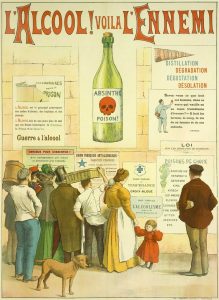 It was supposed to be fun. All fun. But now there is the reckoning. Not just in the sense of #Dryuary but #Skint-uary. #I-spent-all-I-had-uary. No wonder folk feel a pinch and stop splurging. Remember, though… pubs can be for
It was supposed to be fun. All fun. But now there is the reckoning. Not just in the sense of #Dryuary but #Skint-uary. #I-spent-all-I-had-uary. No wonder folk feel a pinch and stop splurging. Remember, though… pubs can be for 
 Like you, I am tired. End of year tired. I was tired on Christmas Eve and Christmas Day offers no rest. It feels like the end of a university term and tomorrow we travel. 2019 was a good and busy year – and next week, in my fifty-seventh year, I enter my seventh decade on the planet. I need a rest. So I will be brief this week if only to see if I can get in another nap.
Like you, I am tired. End of year tired. I was tired on Christmas Eve and Christmas Day offers no rest. It feels like the end of a university term and tomorrow we travel. 2019 was a good and busy year – and next week, in my fifty-seventh year, I enter my seventh decade on the planet. I need a rest. So I will be brief this week if only to see if I can get in another nap.  It’s not often that I get to headline the weekly update with something so.. so… unbeery – but is beer ever really that much removed from politics? Consider this photo to the right that
It’s not often that I get to headline the weekly update with something so.. so… unbeery – but is beer ever really that much removed from politics? Consider this photo to the right that  Barry in Germany posted an afternoon’s worth of photos of
Barry in Germany posted an afternoon’s worth of photos of 